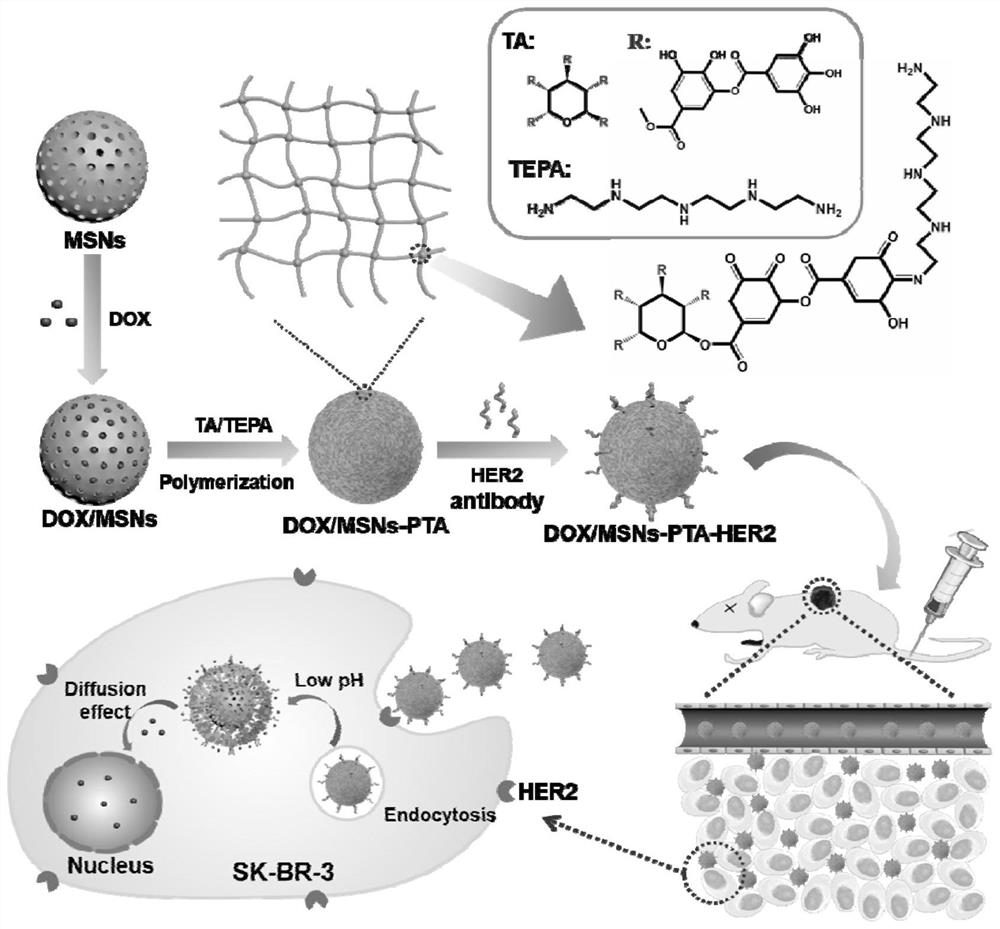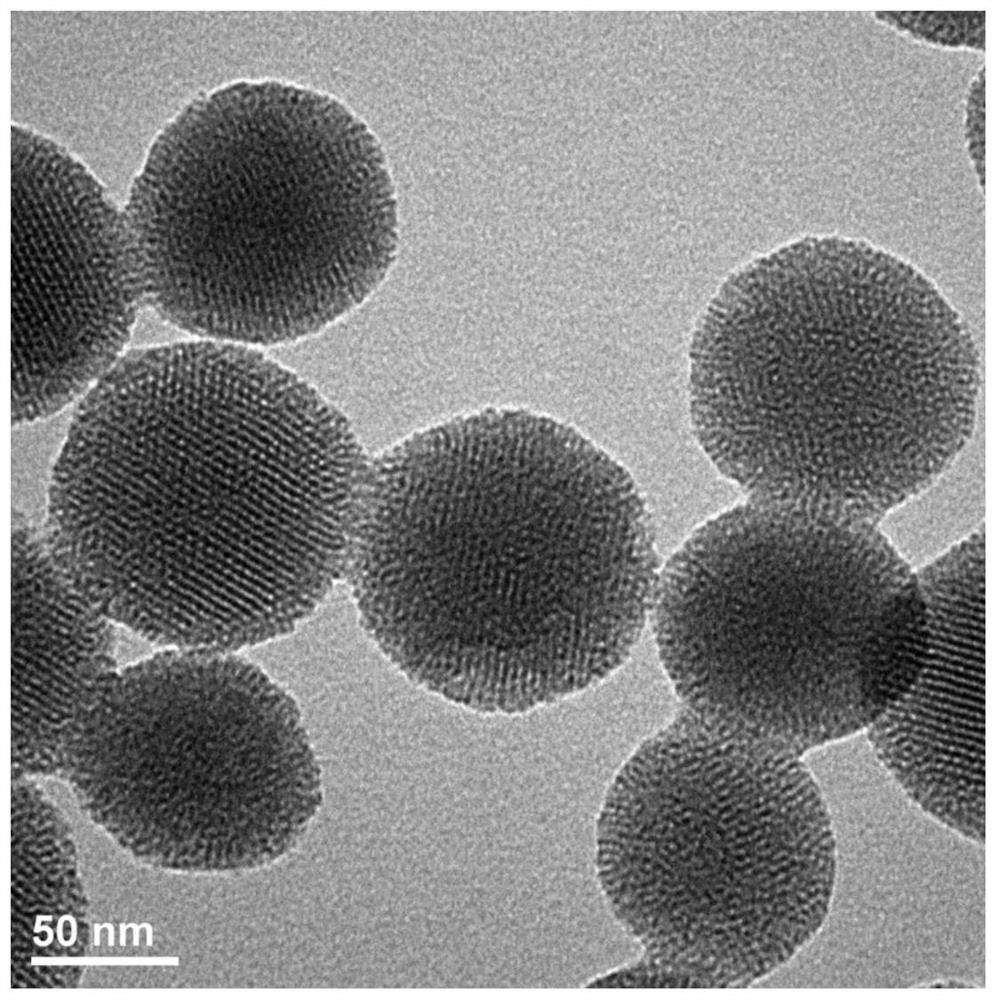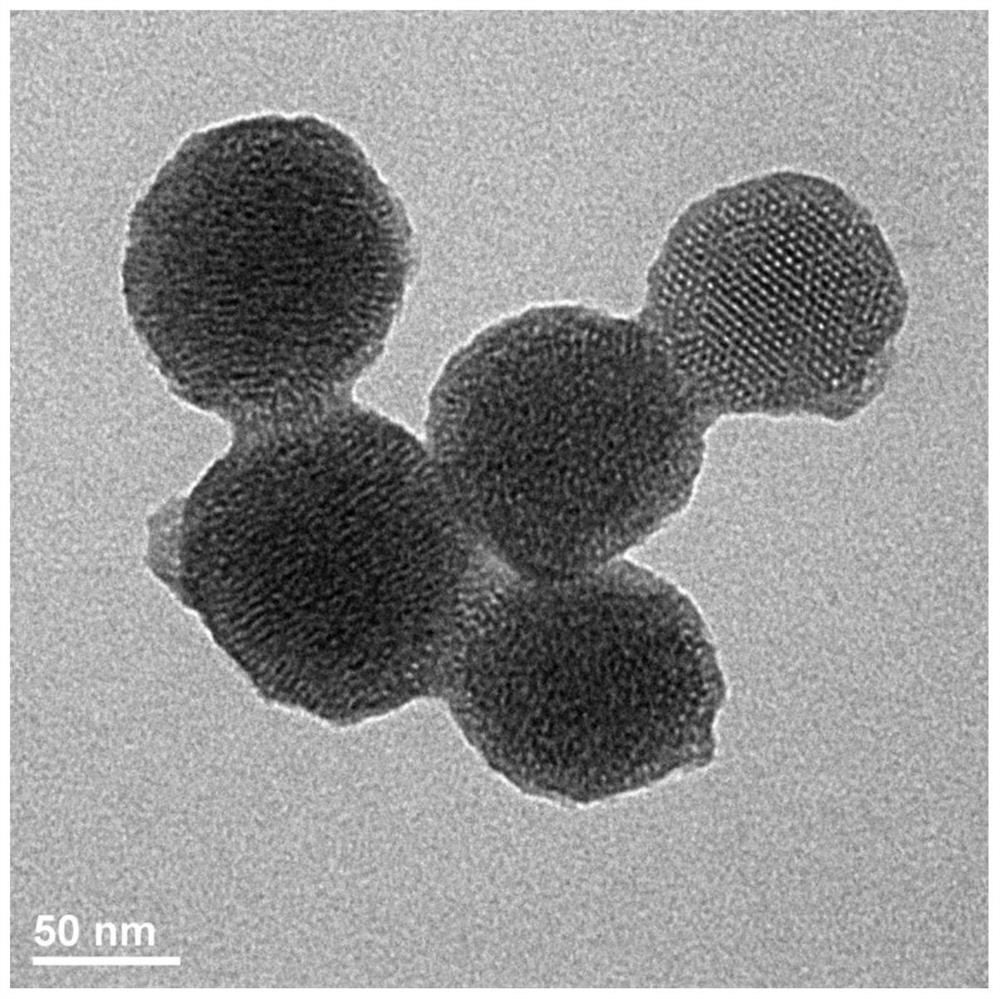Preparation method and application of PH reversible controlled release meso-porous silicon nanometer drug delivery system
A technology of mesoporous silicon nanoparticles and nano-drug loading, applied in the fields of nano-biomedicine and tumor treatment, can solve the problem that pH-responsive controlled release behavior is not reversible, and achieve good biocompatibility and reduce toxicity.
- Summary
- Abstract
- Description
- Claims
- Application Information
AI Technical Summary
Problems solved by technology
Method used
Image
Examples
Embodiment 1
[0044] Example 1. Preparation of a breast cancer-specific pH reversible controlled-release mesoporous silicon nano-drug delivery system (Figure 1).
[0045] (1) Synthesis of mesoporous silicon nanoparticles (MSNs): First, 500 mg of octadecyltrimethylammonium bromide (CTAB) was dispersed into 200 mL of ultrapure water and 40 mL of ethylene glycol solution as a template, and 2mol / L NaOH (1.75mL) was added to the above mixture. Then, after the mixture was continuously stirred at 80° C. for 1 h, 2.5 mL of tetraethylorthosilicate was added, and stirred at 80° C. for 2 h. Afterwards, in a high-speed refrigerated centrifuge, centrifuge at a speed of 12100 rpm for 20 min, and collect the solid precipitate. The precipitate was washed three times with ultrapure water and ethanol, and then dried in a vacuum oven. Finally, the dried samples were calcined in a muffle furnace at 550 °C for 6 h to remove the template agent CTAB, and the obtained dried samples were MSNs.
[0046] (2) Synth...
experiment example 2
[0050] Experimental example 2. Characterization of a breast cancer-specific pH reversible controlled-release mesoporous silicon nanometer drug delivery system.
[0051] Various nanocarriers prepared in Example 1 were used as detection objects for characterization to verify the success of each step of modification. Firstly, the changes of the surface of the mesoporous silicon nanoparticles before and after the modification of the polytannic acid layer were observed by a transmission electron microscope. figure 2 It shows that the mesoporous silicon nanoparticles are relatively regular circular and monodisperse, and at the same time, have a clearly visible mesoporous structure. After modifying the polytannic acid layer ( image 3 ), a layer of polymer film appeared on the surface of the particles, which reduced the dispersion and blurred the edges. At the same time, the mesoporous structure was no longer clear. This demonstrates the successful modification of the polytannic a...
experiment example 3
[0052] Experimental example 3. In vitro drug controlled release experiment of a breast cancer specific pH reversible controlled release mesoporous silicon nanometer drug loading system.
[0053] The DOX / MSNs-PTA-HER2 prepared in Example 1 was used as the detection object to carry out the in vitro controlled release experiment: a certain amount of the drug-loading system was dispersed in 10 mL of PBS solution, and transferred into a dialysis bag. Then, the dialysis bags are placed in buffers of different pH. At regular time intervals, 1 mL of buffer solution was taken out, and its absorbance was measured with a UV-Vis spectrophotometer, and the drug release was calculated by comparing with the standard curve. At the same time, add 1 mL of fresh buffer to the system to keep the total volume constant. First, the pH-controlled release performance of the nano-drug delivery system was studied in different and constant pH environments. Such as Figure 7 As shown, as the pH value g...
PUM
| Property | Measurement | Unit |
|---|---|---|
| Particle size range | aaaaa | aaaaa |
Abstract
Description
Claims
Application Information
 Login to View More
Login to View More - R&D
- Intellectual Property
- Life Sciences
- Materials
- Tech Scout
- Unparalleled Data Quality
- Higher Quality Content
- 60% Fewer Hallucinations
Browse by: Latest US Patents, China's latest patents, Technical Efficacy Thesaurus, Application Domain, Technology Topic, Popular Technical Reports.
© 2025 PatSnap. All rights reserved.Legal|Privacy policy|Modern Slavery Act Transparency Statement|Sitemap|About US| Contact US: help@patsnap.com



